Thirty years ago, while sailing north through the Great Barrier Reef, I devoured American travel writer Paul Theroux’s book The Happy Isles of Oceania: Paddling the Pacific. On that sailing adventure I only skimmed the outer rim of the vast Pacific Ocean, but the deck of a yacht seemed just the place to properly absorb Theroux’s vivid account of the islands that lie scattered across the largest body of water on earth.
With Theroux I could dream of “little islands…each of which was a perfectly rounded piece of land, many of them just like drops of batter on a hot griddle, the ones that cook quickly”. But most of all, The Happy Isles of Oceania conjured up a picture of remoteness, of great distances from anywhere and everywhere, of the sorts of places that in our overly connected world are now almost impossible to find. To Theroux, the experience of the Pacific was “like the night sky, like outer space, and of island-hopping in that ocean being something like interplanetary travel”.
In November 2023, I embarked with Coral Expeditions on one of their wonderful forays away from the Australian coast, this time on a voyage marketed as: “Through the Islands and Atolls of Micronesia”. Having family in Fiji, I’d travelled the less-trodden tracks across its islands many times, but Micronesia was all new to me. And what a revelation it would prove to be.
As I flew from Sydney to Manila in the Philippines to join our ship, the Coral Adventurer, I thought back to my reading of The Happy Isles. Theroux was writing in the early 1990s, at the dawn of the age of the internet and hyperconnectivity, and I wondered now, more than a quarter of a century later, if any leg of our voyage would somehow still manage to evoke his notion of “interplanetary travel”. But as the voyage progressed, any possible disappointment was assuaged.

Escaping the sweaty and heaving mega-city of Manila, with its press of perpetually dysfunctional traffic and 25-million-strong population, the Coral Adventurer headed first to some quieter and comparatively remote corners of the southern Philippines, where the ship’s guests enjoyed the warm embrace of locals amid dense tropical forests and the colourful delights of fringing coral reefs. Filipinos have a deserved reputation for being a happy and welcoming people, and ahead of each shore excursion the locals gathered on the beach or at a wharf, ready to shower us with handmade straw hats, fans and souvenir necklaces. An enthusiastic troupe of young dancers would usually be on hand to entertain us, but with a ghetto-blaster providing the backing track, the performers’ welcoming moves were more TikTok and YouTube than anything I’d imagined as authentically or ethnically Filipino.

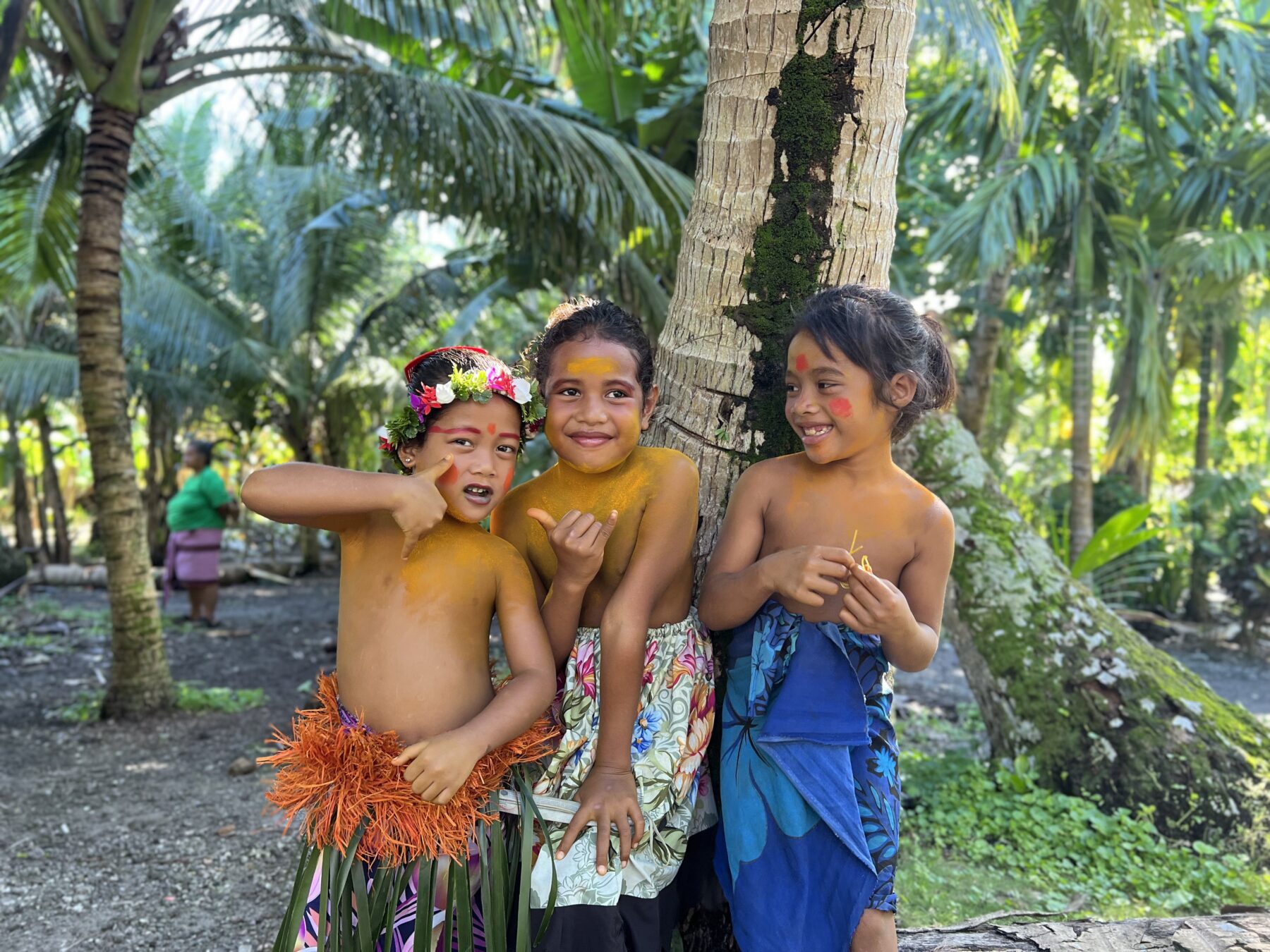
Our time in the Philippines ended on a high with a swim in the famous Sohoton Bay, Bucas Grande Island. There, trapped among smaller embayments and a cluster of forest-clad limestone islets, stingless jellyfish in their countless thousands silently pulse through a labyrinth of pellucid lagoons. Snorkelling among these graceful creatures felt weirdly like being suspended in nature’s own giant lava lamp.
After five days in the Philippines, our vessel turned east for Palau, our first stop in Micronesia. Palau is at the westernmost end of the Caroline Islands, an archipelago of approximately 500 specks of land – much like Theroux’s firmament – strewn across more than 3500km of ocean to the north of the Equator. We could have easily flown to Palau, but the pace of our ship on a languid Pacific Ocean seemed far more appropriate, and time measured as a function of distance only heightened the sense of arrival at each destination. This was a cruise, after all, in every sense of the word.
Two days and nights at sea behind us, we disembarked at the port of Koror, on the most populous island (also named Koror) in the nation of Palau. Yet to call any part of Palau “populous” is perhaps stretching the point. While geographically in Micronesia, Palau is an independent country, with its scatter of approximately 340 islands supporting a total population of less than 20,000 people. Not quite Vatican City proportions in the small country stakes, but not far from it.
The nation might be small, but at one of the two excellent museums we visited, I couldn’t help but notice a photograph of Palau’s national capitol, a building that is grossly out of scale for the tiny country it serves. This sprawling Greek revival edifice is not located in Koror, but in the capital ‘city’ of Ngerulmud in the state of Melekeok – population of just 318 at the 2020 census.
Adorned with an overblown white dome that would look more at home in Washington, DC, the capitol was completed in 2006 and cost more than US$45 million to construct. It was partly funded by a US$20-million-dollar loan from Taiwan. The style of the building, alien to a small Pacific island, was exceedingly strange to me – mad, even – but the Taiwanese connection was no surprise, given the tussle with China for influence in the region.
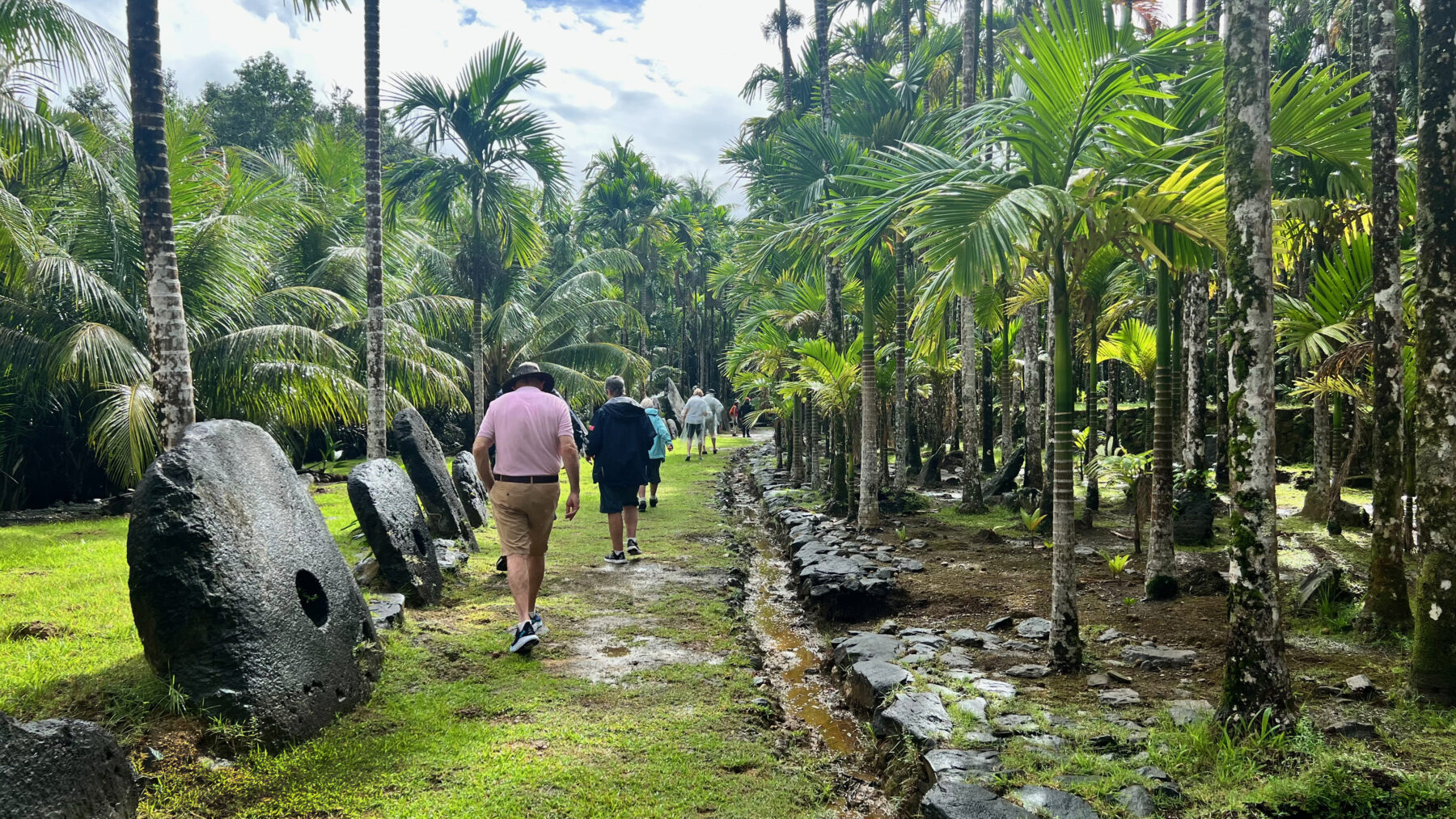
Sometime between about 1500 and 1000BCE, ancestors of the present-day Palauans braved the open ocean and embarked on the great Austronesian migration through Southeast Asia and the Pacific, out of the very same island of Taiwan. Ironic, I thought, given the state of 21st-century Pacific realpolitik.
And out in the forecourt of the Belau National Museum stands a magnificent reconstruction of a bai, a traditional steep-roofed Palauan meeting house, with its gable-ends resplendent in painted decorations of fish and animated figures from Palauan mythology. Why couldn’t Palau’s capitol reflect the rich heritage of an ancient society, I wondered, just as had occurred with Papua New Guinea’s parliament building in Port Moresby? It appeared to me, albeit as a whistlestop casual observer, that Palauan identity had been too easily traded for economic advantage.
Would such a dilution of traditional ties be seen further along our journey? I need not have worried, because extreme physical remoteness was soon to offer a rare glimpse of societies still functioning beyond the tide of modernity.
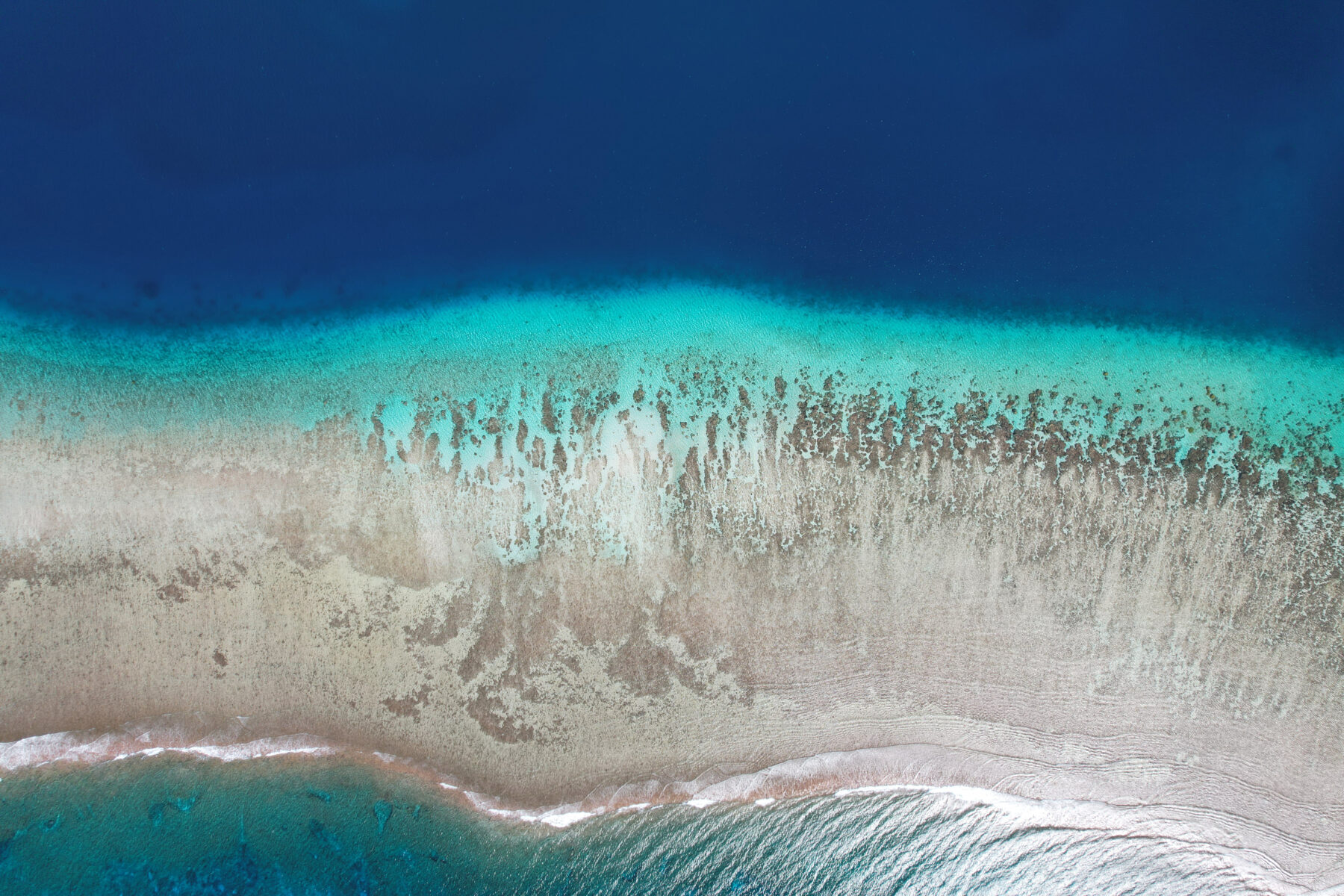
From Palau, we headed for the snug little port of Colonia on Yap, a tight cluster of four rugged islands fringed by a reef. We were now in the Federated States of Micronesia, with Yap forming one of four states, along with the more easterly Chuuk, Pohnpei and Kosrae. Yap is famous for its stone money, a unique currency still used in important matters of traditional and ceremonial exchange.
In the village of Gael’ we wandered along an avenue of stone money dating from pre-European times when Yap was the centre of an extensive maritime empire. Carved from coralline limestone, many of these stone discs would have taken several men to lift. Each has its own acknowledged history, handed down orally to succeeding generations of Yapese. The more arduous or dramatic the story of their acquisition, the greater the agreed value of the stones. Remarkably, they were mostly quarried in Palau and transported to Yap on rafts towed behind sailing canoes. Because of their great bulk and weight, the stones are rarely moved, even as ownership changes.
If I were to try and imagine my idea of a Pacific paradise, I think many of the atolls in the Carolines would readily fit that vision. Ifalik and Lamotrek, visited on successive days of our cruise, were postcard-perfect examples. Each was necklaced by a reef and sported countless coconut palms, luxuriant breadfruit trees and white coral sands, with jewel-like lagoons of pale jade and aquamarine.
Both support small populations of several hundred people, ranging from infants through to the elderly. The saying that it takes a village to raise a child could readily apply to these communities. Everyone appeared happy and healthy, their isolation in many ways a saving grace – or so it appeared to the casual observer.
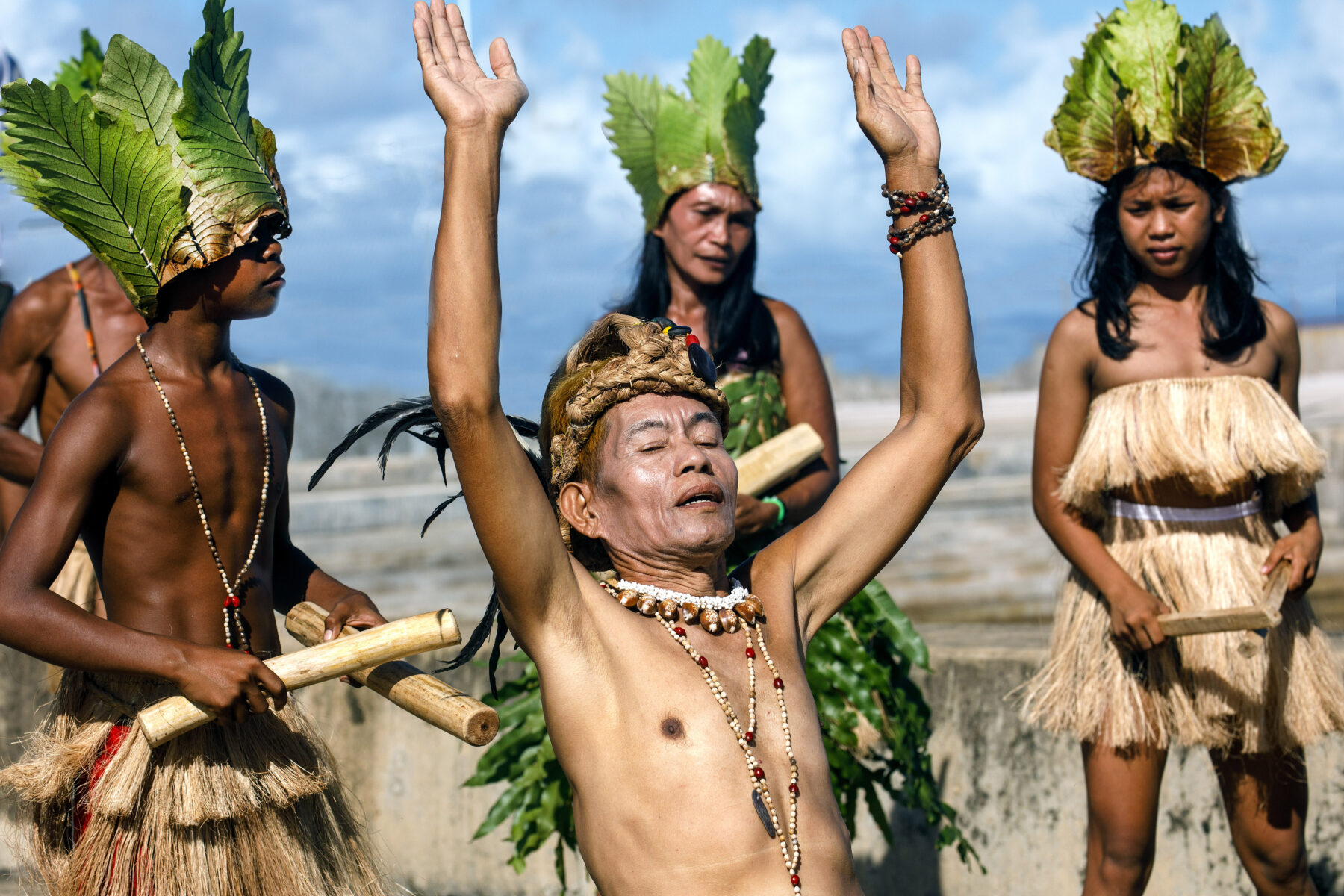
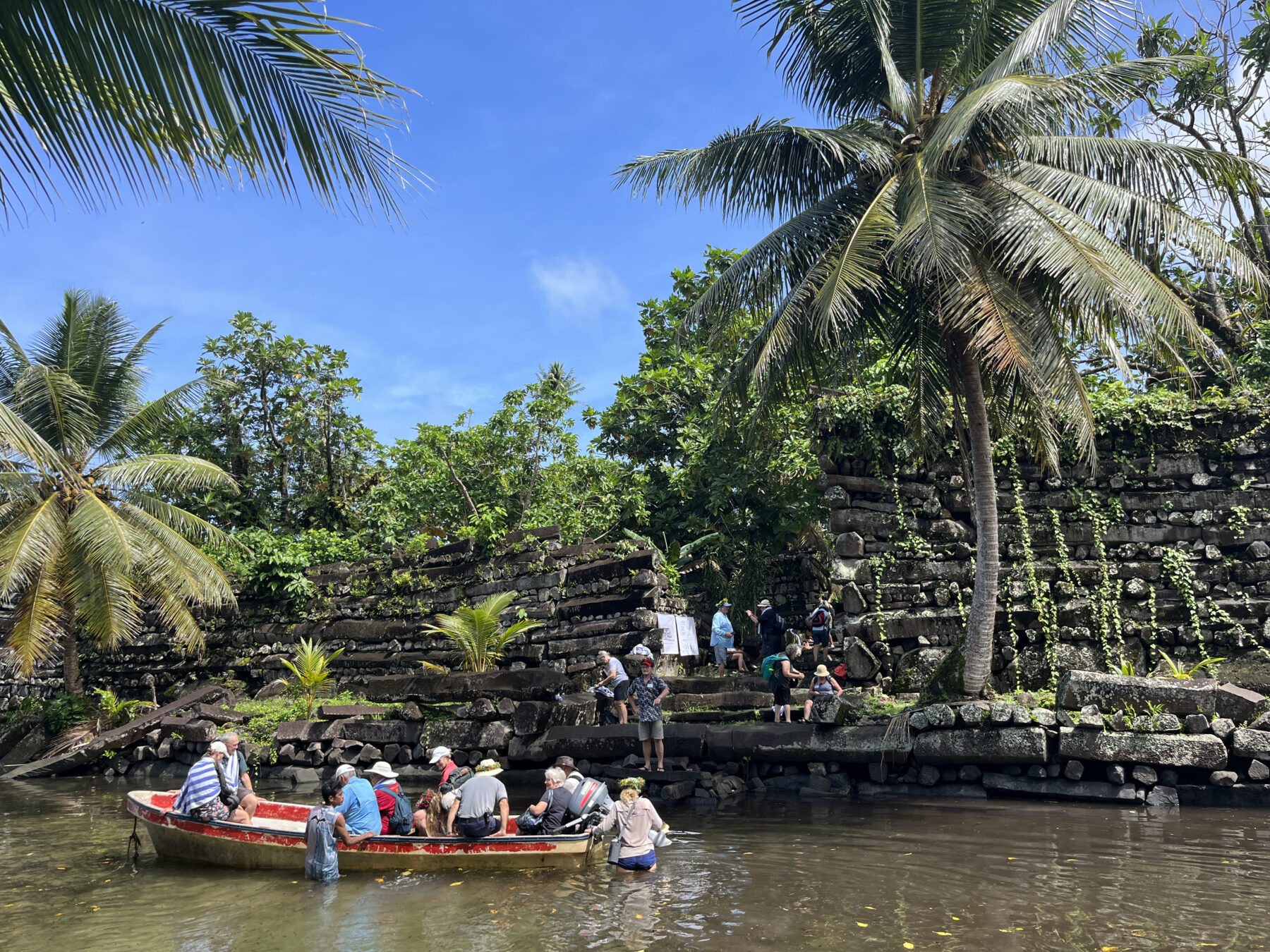
Ifalik lies 700km south-east of Yap, and Lamotrek roughly a further 200km on. Each atoll, and others in the Carolines, is served by small supply ships that arrive perhaps three or four times a year. And in the case of Ifalik, a tourist vessel such as the Coral Adventurer had not been seen in 12 years!
We’d become used to warm greetings in the Philippines, but somehow the humility and unaffected charm of the people of both Ifalek and Lamotrek left a far deeper impression. On the beach they decked us with floral leis, and after a welcome from the village chief, we were treated to dance performances. Women, men and children – aged from four or five years and up – formed long and rhythmic lines as they chanted, swayed, clapped, and slapped their bodies in unison. Their skin glowed from liberal dustings of turmeric, and each dancer was adorned with woven palm necklaces, headdresses, anklets and lava-lavas from head to toe. There was not a ghetto-blaster to be heard.
Outboard fuel is a scarce and expensive commodity on these islands, so much of the fish catch is obtained from outrigger canoes. Not only were we taken on a sailing excursion on the Lamotrek lagoon, but we were also able to watch a sure-eyed villager equipped with just an adze shaping the hull of a canoe from the single trunk of a breadfruit tree.
Traditional medicine, food preparation and weaving displays were all on our program at these enchanted islands. In addition, we were honoured with a demonstration of celestial navigation by one of Lamotrek’s elders. Seated on the ground, one betel nut–chewing old man explained the mysteries of his venerable craft with the aid of what looked like a makeshift compass rose assembled from sticks and small lumps of coral. But his was no compass rose. This was so much more. In the simplest of terms, it was emblematic of his and his ancestors’ intimate knowledge of the stars, of the waves and tides, of the flight of birds, and the nature of clouds. It was his mind map of the seas and the firmament above. The Micronesians are fabled as the greatest of all traditional navigators. From Taiwan in ancient times, to Lamotrek in the 21st century, thousands of years of practical wisdom briefly lay at our feet.
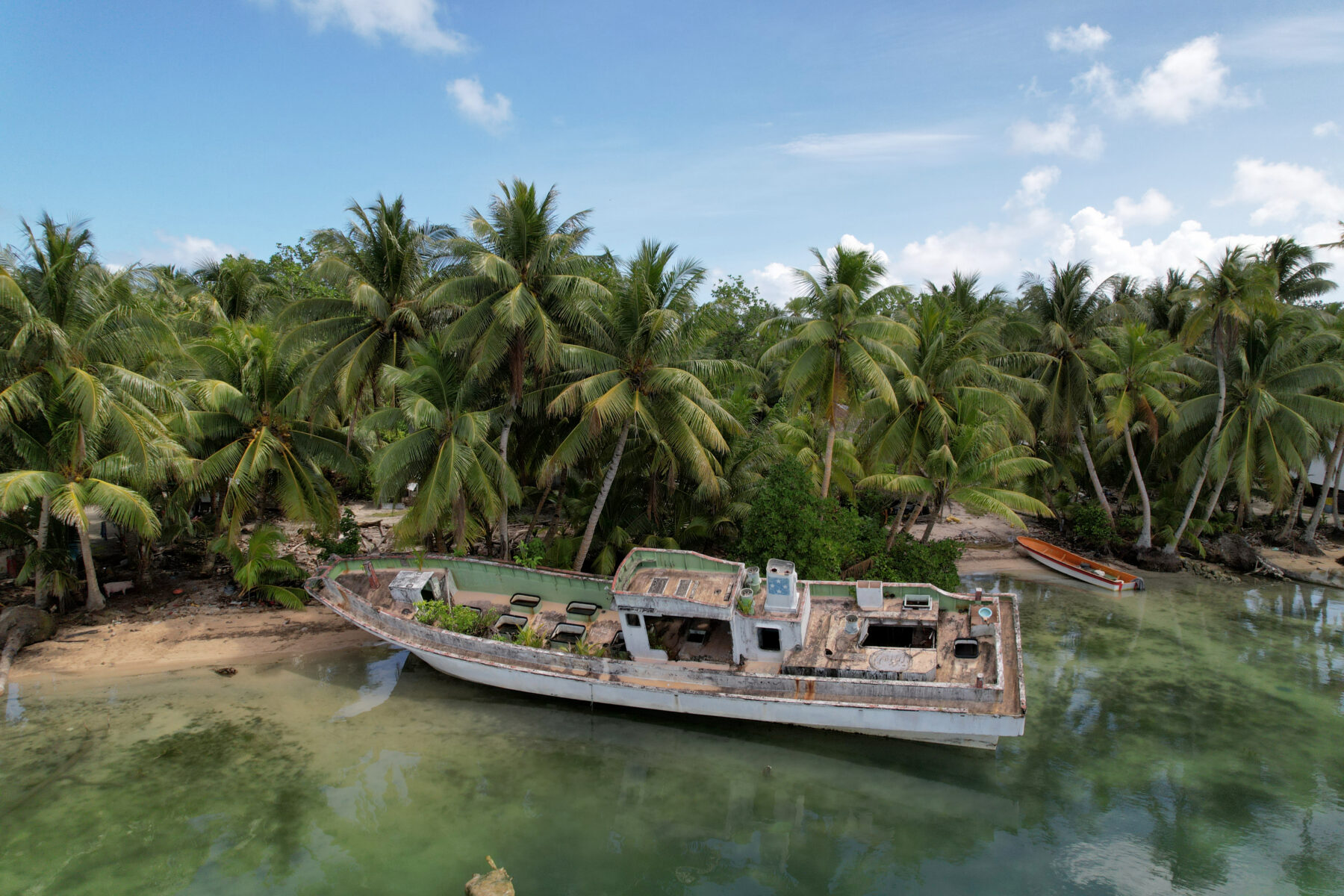

The jewels of Ifalik and Lamotrek were followed by a day in Chuuk (formerly Truk) Lagoon, a site known the world over as the graveyard of dozens of Japanese ships and aircraft from World War II. The scuba divers in our party reported some spectacular underwater adventures from the day at Chuuk before it was time to move further eastwards to Pohnpei and the ruins of Nan Madol.
I don’t think anyone travelling on our ship was prepared for what we were privileged to see at this UNESCO World Heritage site. Beginning in the eighth or ninth centuries, 96 islets were constructed on the south-eastern edge of Temwen Island, Pohnpei’s close neighbour. Great slabs of columnar basalt, some more than 6m long and weighing several tonnes, were quarried on the other side of Pohnpei and somehow shipped to Nan Madol, where defensive walls, temples, tombs and living quarters were constructed, all connected by a network of tidal canals. The regular hexagonal profile of the basalt slabs made them ideally stable in dry-stone wall construction, and many of the walls are still standing despite the ravages of time, water, climate and the roots of determined figs and breadfruit trees. Again, I couldn’t help thinking of the capitol in Palau, and how it might look in 12 centuries time. Not nearly as well as Nan Madol, I suspect.
Our voyage through the Philippines and Micronesia ended with a couple of days at sea before reaching Kavieng in New Ireland, Papua New Guinea. We’d travelled for 26 days, crossed thousands of kilometres of ocean, and had peered back in time to the ancient Pacific and its mysteries.
Best of all, we’d gained a rare glimpse of islanders living in a manner not too far removed from that of their distant ancestors, when to follow the stars and find a new home really was like interplanetary travel.
Alasdair McGregor travelled on this voyage as the Australian Geographic Society’s Host, in partnership with Coral Expeditions. All images supplied by Coral Expeditions.
